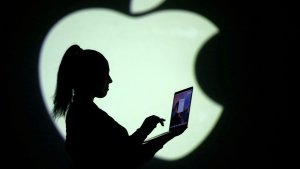How Should Brands Approach WhatsApp?
Conversations on WhatsApp should be natural, meaningful and real.

Whats up with WhatsApp for Business? At F8, Facebook’s annual developer conference, Mark Zuckerberg made an important announcement that is set to redefine how businesses interact, communicate and engage with consumers.
He was talking about Facebook-owned messaging app WhatsApp, which has now opened itself up to businesses and adoption is happening quickly.
According to the latest statistics, five million small business owners are now using the WhatsApp for Business App on iOS after its roll out earlier this year, all looking to reach Whatsapp’s 1.5 billion active users. More than 77% of content shared via mobile actually takes place on messaging apps, so it makes sense. We know messaging platforms are where consumers spend a lot of their time.
But if brands approach this the same way they do all new platforms or technology – which is to create something gimmicky that will generate PR hype, with no real consumer value, they will be deleted quicker than they deleted their ex boyfriend.
Sell, sell, sell just won’t cut it
Before you jump to the messaging platform, it’s vital that you don’t take the sell, sell, sell approach. Unlike advertising, where you buy people’s attention and can spam across multiple channels, messaging is a user-demand-led platform where people can just choose not to listen or talk to you.
For as long as we can remember, brands have shouted and we’ve listened. The technology used to advertise to large audiences, was mostly used to broadcast one message. A one-size-fits-all approach. Your brand is no longer what you say about yourself, it’s what everyone else is saying about you.
As the internet has evolved, marketers have tried to apply traditional advertising principles of broadcasting messages to digital advertising. The only difference is they justify sending millions of messages out because they are ‘personalised’.
This ‘personalisation’ usually constitutes adding a name to the start or pushing products based on what’s previously been purchased, gender or age. This isn’t the personalisation people crave, and communication from brands is still only one way.
Broadcasting is not a natural way of communicating. Imagine going for dinner with your friend and him just telling you all the great things about himself for two hours, without asking you about yourself. Worse still, he just assumed a bunch of things about you because of your age, ‘gender’ and where you’ve been recently.
That would be a bad conversation and a bad experience. So why do we not hold brands to the same standards?
With VPNs, subscription services and ad-blockers on the rise, brands are finding it increasingly difficult to reach consumers with broadcast messages. It’s no surprise that 75% of consumers find marketing personalisation “creepy” and a further 79% feel like they’re constantly being tracked by retargeted ads.
Greg Icenhower from P&G stated that the FMCG giant was voted the best marketer in the 20th century because they were “the biggest shouters”. But in the 21st century they now “want to be the best listeners.”
Brands have to seriously rethink the way they talk to consumers.
WhatsApp. A fresh start.
WhatsApp and other conversational interfaces offer the potential for a more delicate branded experience. For brands looking to enter the space, it’s important to stay away from creating gimmicky, experiences that consumers might use once, but never again.
This will waste your budget and mean other brands might take your place in the market. Instead, brands need to put the user first by adopting design-led thinking. It all starts with understanding how you can enrich or enhance your customers’ lives.
When it comes to building conversational experiences, the first focus should always be to build around users wants and needs - these wants and needs become the user intent. If you build something you know people are actively asking for, you know users will come back.
The second is to create something of real worth and to fill a space in a user’s life, providing them with real value. These principles are relevant, no matter what the platform.
We created Nike Coach, a messaging experience for Nike on Google Assistant, and Nike.com, which helped people develop a running routine, with tips, tricks, warm ups and cool downs.
Once we had built trust via a genuinely helpful utility, we then chose the right moment to suggest our personalised product finder that helps consumers find the right running shoe.
Offering value first will reward brands with the right to suggest products at timely, personalised and relevant moments. To date, doing this for Nike Coach resulted in a 67% increase in conversion performance with lots of room for improvement.
Things to consider
When building messaging experiences such as WhatsApp, there are three key considerations to acknowledge.
The first is to identify the expertise your brand is bringing to the table – what’s the headspace that you could occupy in a consumer’s life? The second is to understand the consumers’ needs, wants and pain points. And the third is to build a service that offers value and meets those needs.
Research shows that marketers are shying away from investing in messaging, as they struggle to sign off budget for innovation. The brilliant thing about messaging is that you can build an incredibly simple experience that doesn’t break the bank, but is meaningful and rewarding for customers, keeping your brand top of mind.
The opportunity with messaging experiences is that brands can build something, test it, learn from consumers and improve over time. Brands should spend 70% of their money getting an initial, light version live, and save 30% of their spend to build it out and improve it based on user responses.
Whether it’s a simple or detailed hierarchy, the key is to assist, educate, inspire and entertain. You must provide the user with a useful and rewarding connection.
Brilliant examples
Some brands are already paving the way, using WhatsApp to create innovative and highly engaging campaigns.
The Hellmann’s WhatsApp campaign in Brazil was a brilliant example of a useful service. The experience focused on cooking with leftovers and using what’s in your fridge.
The brand acquired users through a special website where they were able to enter their phone number and opt-in to the WhatsApp campaign. Once signed up, they received a message through WhatsApp from a real chef.
The chef then prompts them to upload a picture of the ingredients they have to hand before giving them real advice on what to cook together with Hellmann’s.
Another great example of an experience that offers highly personalised recommendations is Netflix UK. Once customers have opted-in, Netflix will start sending you film and tv show suggestions over WhatsApp.
Of course, Netflix isn’t just spamming your WhatsApp with random shows or movies that you’re not interested in. Everything is recommended using their highly intelligent engine that serves you bespoke, personalised content that they reckon you’ll enjoy.
Looking to the future
This is an exciting time for brands. Seeking a direct to consumer relationship is a way to reduce costs on customer acquisition and grow from the existing customer base. Brands have an opportunity to create something that their consumers will come back to, rely on and love.
But you only get one shot. The nature of messaging means consumers can delete you as a contact and your relationship with them will vanish, so it’s important that brands approach WhatsApp marketing with care and delicacy.
The bottom line is, conversations on WhatsApp should be as valuable, natural, meaningful and real as having a conversation with your friends.
Rob Bennett is CEO of Rehab.
Thanks for signing up to Minutehack alerts.
Brilliant editorials heading your way soon.
Okay, Thanks!

